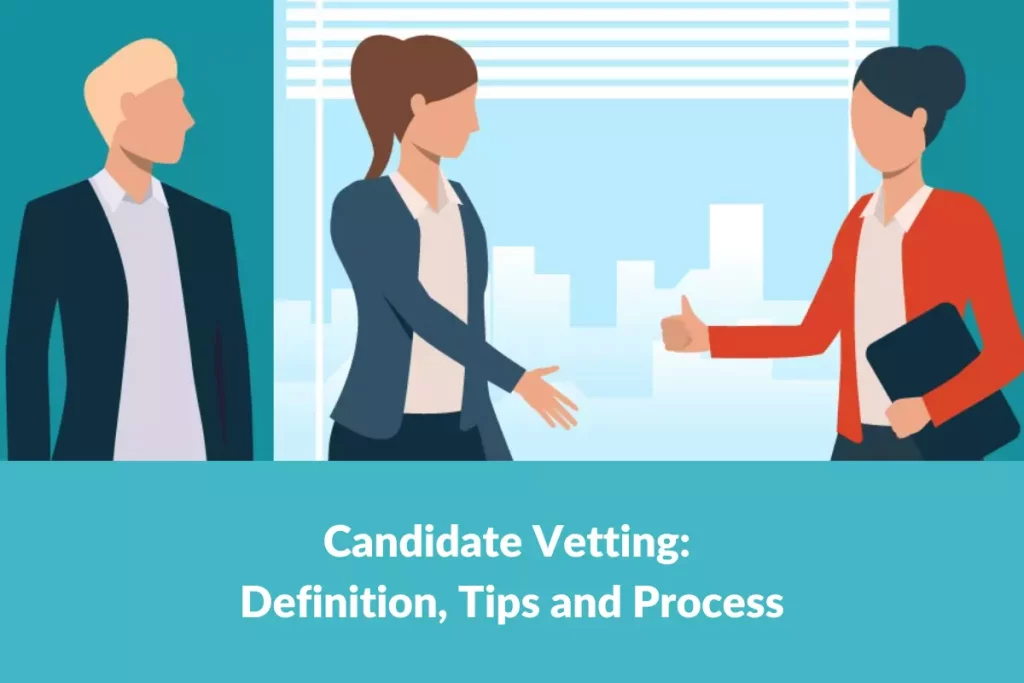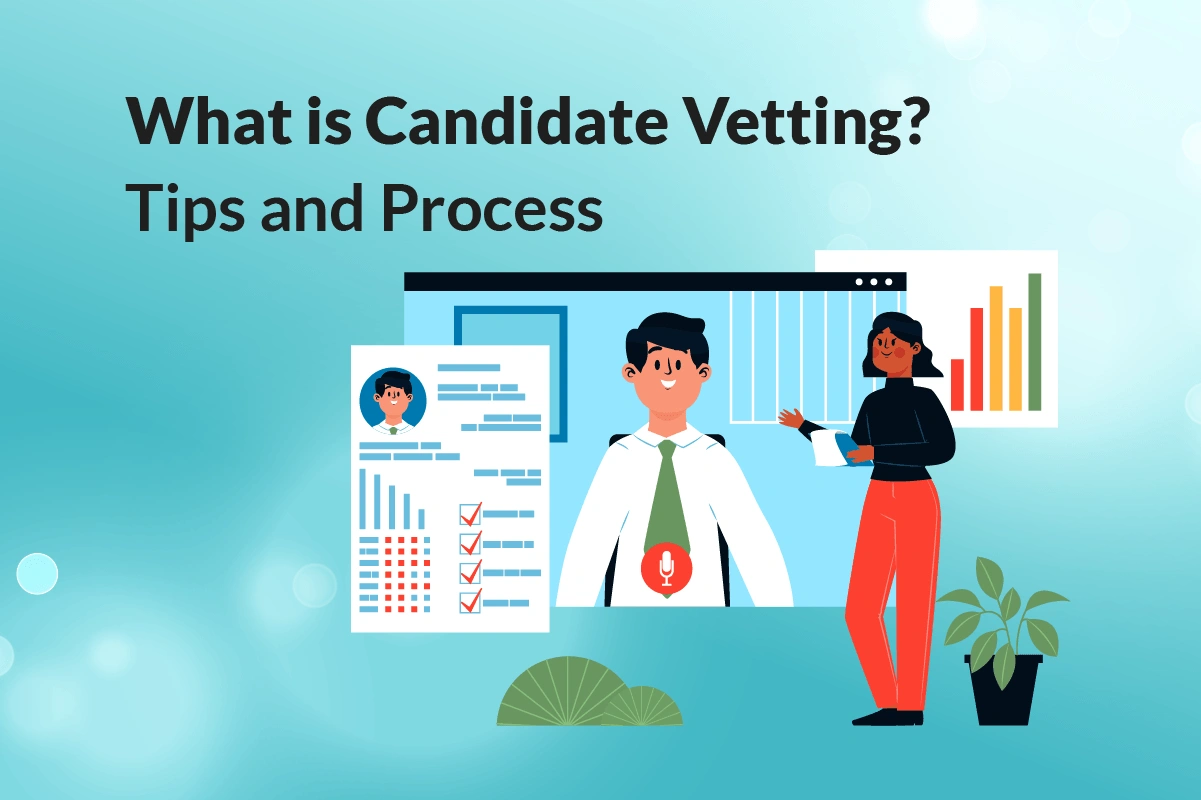Are you considering hiring a new employee? If so, make sure you do your due diligence and thoroughly screen all candidates. This process can be daunting, but it is important to ensure you are making the best decision for your business. In this post, we will define what candidate vetting is and provide some tips on how to do it.
What is candidate vetting?
Candidate vetting is the process of assessing a person’s suitability for a particular role, usually within an organization. The process typically involves conducting background checks and verifying references.

Companies often screen candidates for sensitive positions, for example in the security or finance industries, but you could find that a more stringent vetting process helps you as well. The goal of vetting is to ensure that the person being considered for the job is who they say they are and qualified.
Candidate vetting can be a time-consuming process, but it is important to ensure that the right person is hired for the job. Thorough vetting reduces the risk of hiring someone who could have a detrimental effect on your organization.
Tips for improving candidate vetting process

Write a comprehensive job description
Rather than using a generic template, take the time to write job descriptions that accurately reflect the responsibilities and skills required to perform the job. Being specific will help applicants determine if they really have the qualifications for the job – and help you do the same. Information about the work environment or company culture can also help applicants decide if the job is for them.
Make use of software to speed up the review process
If possible, use software to review candidates’ applications and resumes to speed up the recruiting process. This software can search resumes for specific keywords to help you narrow down your talent pool. Furthermore, the software can enable a “blind” selection process, ensuring that potential biases are avoided when selecting candidates based solely on their skills and abilities.
Review candidates’ resumes and cover letters
When you receive applications from candidates, the first phase of the vetting process begins. Based on CVs and cover letters, you will determine whether the candidates meet the minimum requirements of the job and seem to fit into the company culture.

Another factor to consider is whether the candidates have used keywords in their resumes that were relevant to your job description. The use of these keywords demonstrates that they are aware of the duties and expectations of the job. Another good indicator of an applicant’s ability to develop their skills and achieve their goals is if their resume shows clear career progression or skill growth through strategic career shifts.
Assess candidates’ abilities or skills
You may want to test the candidates’ abilities to perform the tasks required for the role after you have reviewed their documents. Determine what skills or knowledge are required, and then develop an assessment that candidates must complete by a certain deadline.
This deadline will depend on your requirements, but give candidates at least a day or two. These tests can help you narrow down your applicant pool to the most qualified candidates.
Review candidates’ social media profiles
You should think about checking candidates’ online presence, especially if they will be working with clients. If a candidate has inappropriate posts or images that are easy to find through online searches, this could be a red flag.

When you hire employees, you want to make sure they promote and protect your company’s good name.
Screen applicants via phone call
Candidates whose resumes and assessments match your requirements will proceed to the next stage of the vetting process: the phone screening. This phone call is a short conversation that lasts about 30 minutes.
In this interview, you will describe the job and its duties, assess whether the applicant meets the basic requirements of the job, check their interest in the position, and answer any questions they may have.
Interview candidates
After completing the pre-interview vetting process, you should have a list of qualified applicants who meet the minimum requirements of the job and are ready for a live interview (in-person or video).

During the interview, you can learn more about each candidate’s work style, personality, and specific examples of skills. Different managers or colleagues can assess whether the candidates would be a good fit for the team and the company culture through a series of interviews.
As you progress to live interviews, check out our ‘Panel Interview‘ guide for a comprehensive look at assessing candidates from different angles
Make contact with the candidate’s references
After you have interviewed the applicants and decided who you want to hire, you should ask for references to contact. They should name at least one former manager.
Speaking with the candidate’s references is an important step in the vetting process as it helps to ensure that the applicant was honest during the interview and has the skills required for the job. These references can also provide information about the applicant’s work ethic or personality.
Check the candidate’s professional background
Before making a job offer, make sure all information provided by the applicant on their professional and educational background is correct. This information can be verified by HR or by a third party.
Applicants should provide you with the contact information for each of their previous jobs so that you can contact them and confirm their job titles, dates of employment, salary and reasons for leaving.
Conduct thorough background checks
In addition to verifying the applicants’ educational and professional backgrounds, your company may require additional background checks. You must inform applicants that they must pass a background check before they receive a job offer.
Conducting thorough background checks is an important part of the vetting process because it can help you select candidates who are trusted to complete the job. Background checks can also help you ensure the safety of your employees and the public and protect your company’s reputation. Check your state regulations on when you can use the findings from a background check to make a hiring decision. If a candidate was once convicted of a driving offense, for example, but they are not responsible for driving a company car, some state laws say that you can not legally not hire a candidate solely based on that background check’s findings.
Maintain consistency in your vetting process
Once you have developed a strategy for vetting candidates, you should stick to it to ensure that all applicants are assessed using the same criteria. Some aspects may differ depending on the role, but every team within a company should follow the same process when hiring a new employee. To ensure that everyone follows the same steps, document this process and share it with other hiring managers in your department or your colleagues from the HR department.
Conclusion
The tips and procedures outlined in this article will help you develop a solid system for vetting candidates in your organization. By thoroughly screening candidates, you can ensure that only the best applicants advance in the hiring process.
Remember, an effective candidate vetting system is key to finding top talent for your company.
Do you have any other tips for conducting applicant screening? Share them with Boulo Solutions!
References
- DHS Government. (2022). Public-Private Analytic Exchange Program Topic Team Overviews. Washington D.C: DHS Government. Retrieved from https://www.dhs.gov/publication/aep-topic-team-overviews
- Experian. (2009). A guide to successful employee vetting. Nottingham: Experian. Retrieved from https://biz-file.com/f/article/31782_1.pdf

